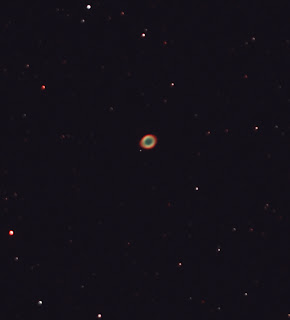Top: Looking East
Bottom: Looking South
This is the imaging set up on the back deck in Abbotsford. I have a clear view of the sky from ENE through to the SSW and a restricted view elsewhere over the roof. Fortunately Polaris is visible to the North, which facilitates telescope alignment. The downtown area of Abbotsford is situated to the South. The Clear Sky Chart lists the light pollution level as "red". I use a Baader UHC-S filter which does an excellent job of removing any colour effects of the city lights.
The photo shows:
Stellarvue 115T20 Apo Triplet Refractor
HEQ-5 Mount
Orion Star Shoot Pro One-Shot Colour Camera
7.8X7.8 micrometer pixels
~2.01 arc sec/pixel resolution
102x68 arc min field of view
KW Telescope Guide Scope (QHY-5 Camera) (mounted on the telescope rings)
9X50 scope, ~210mm focal length
QHY-5 camera, 5.2X5.2 micrometer pixels
1280X1024 pixels
~5.1 arc sec/pixel resolution
109X87 arc min field of view



